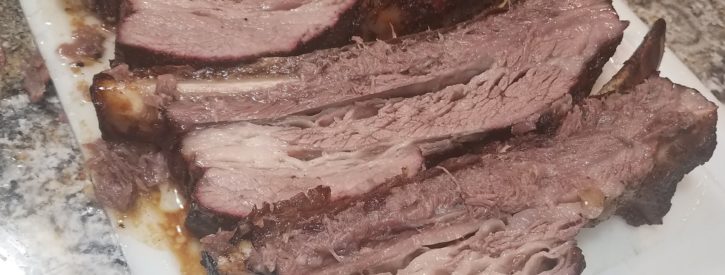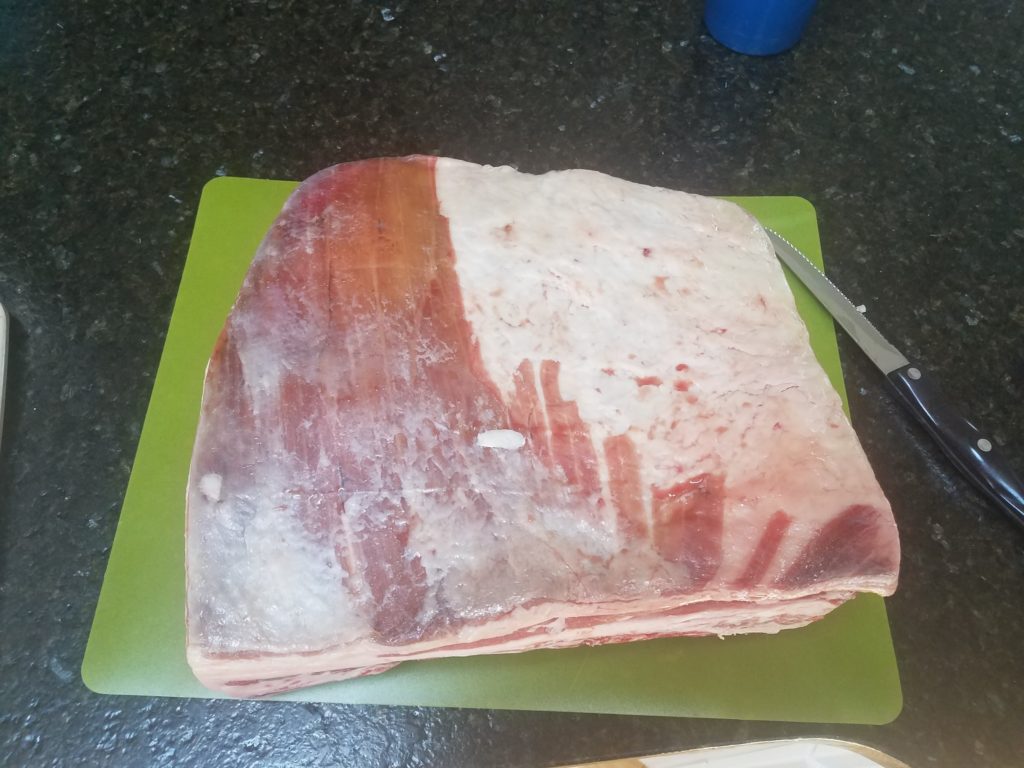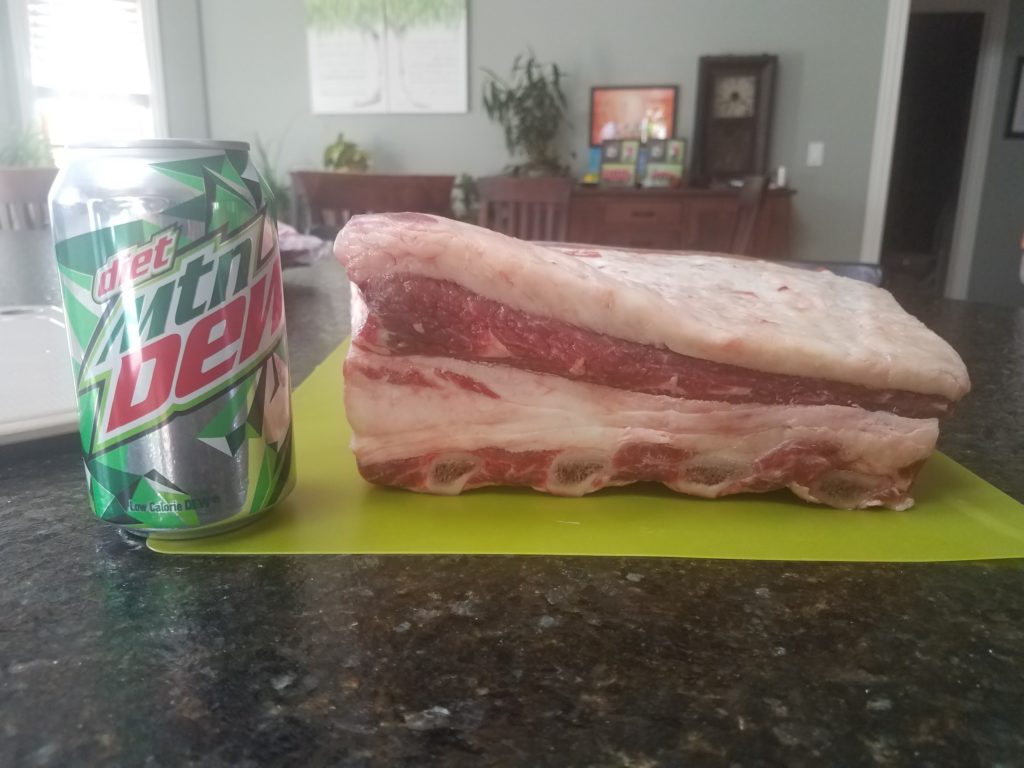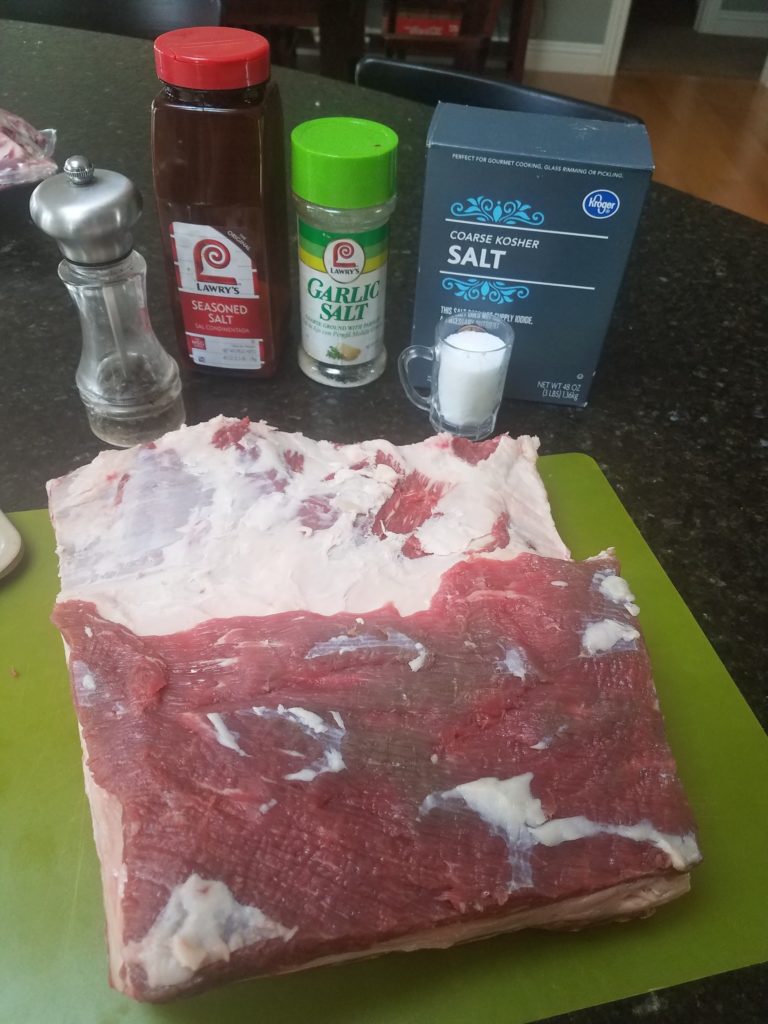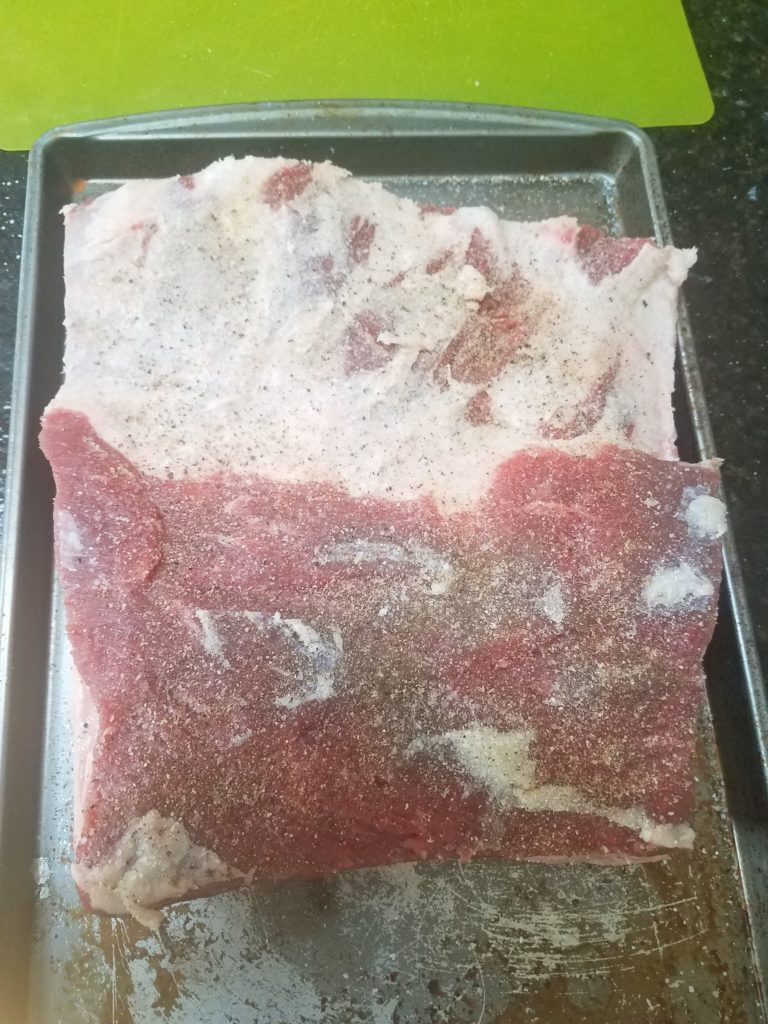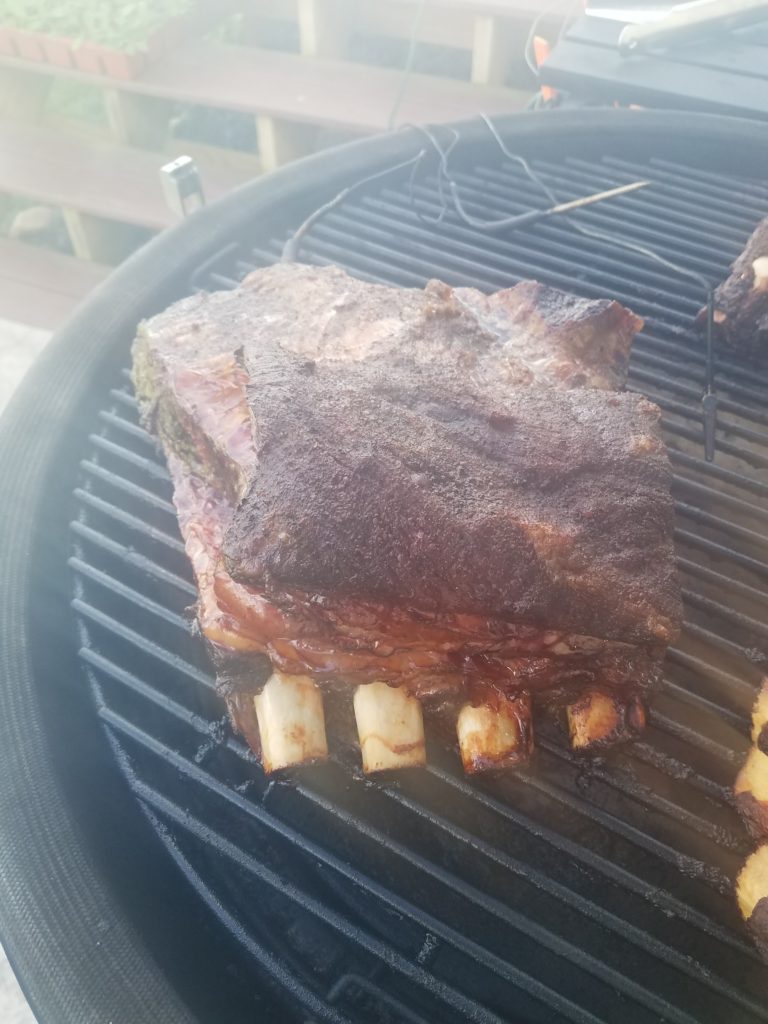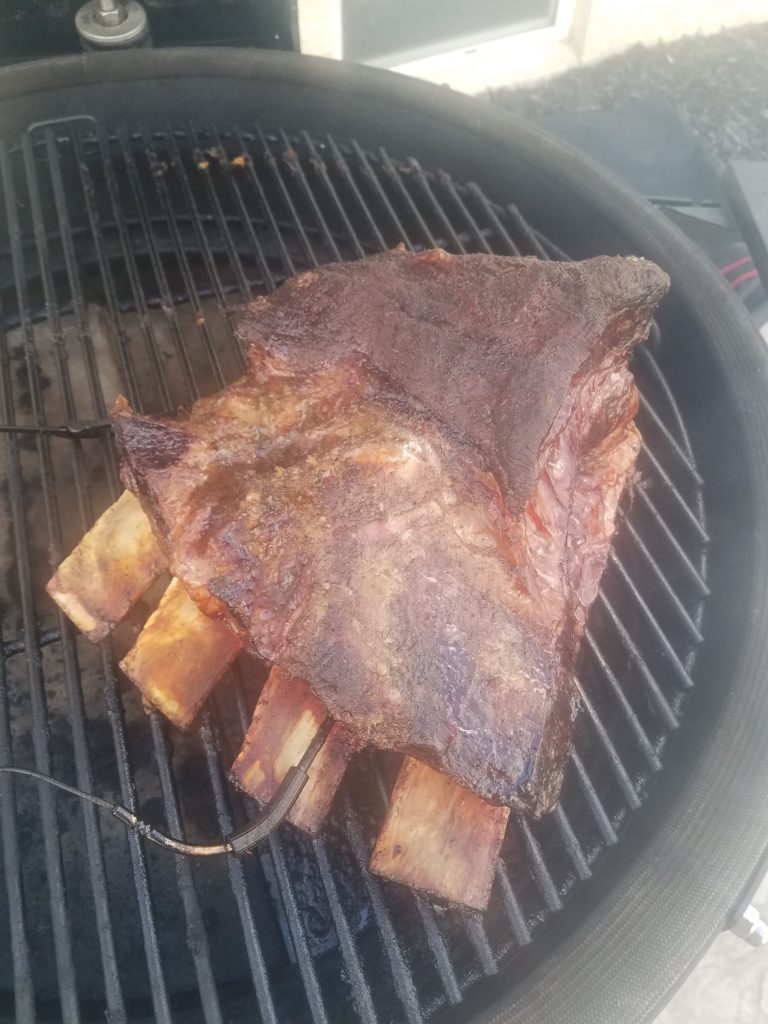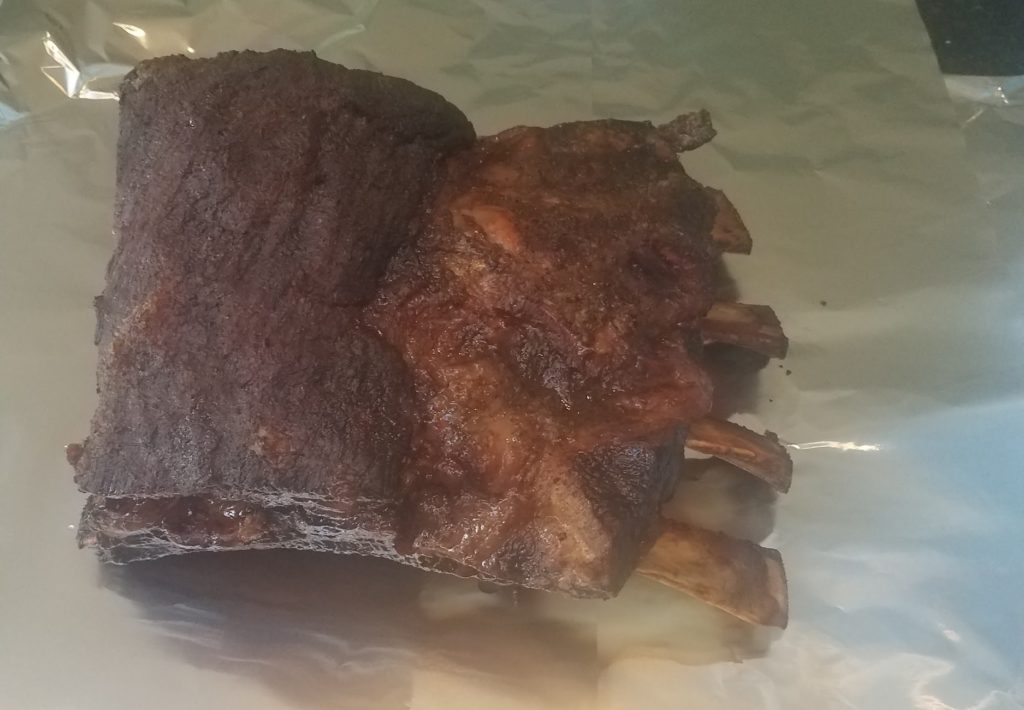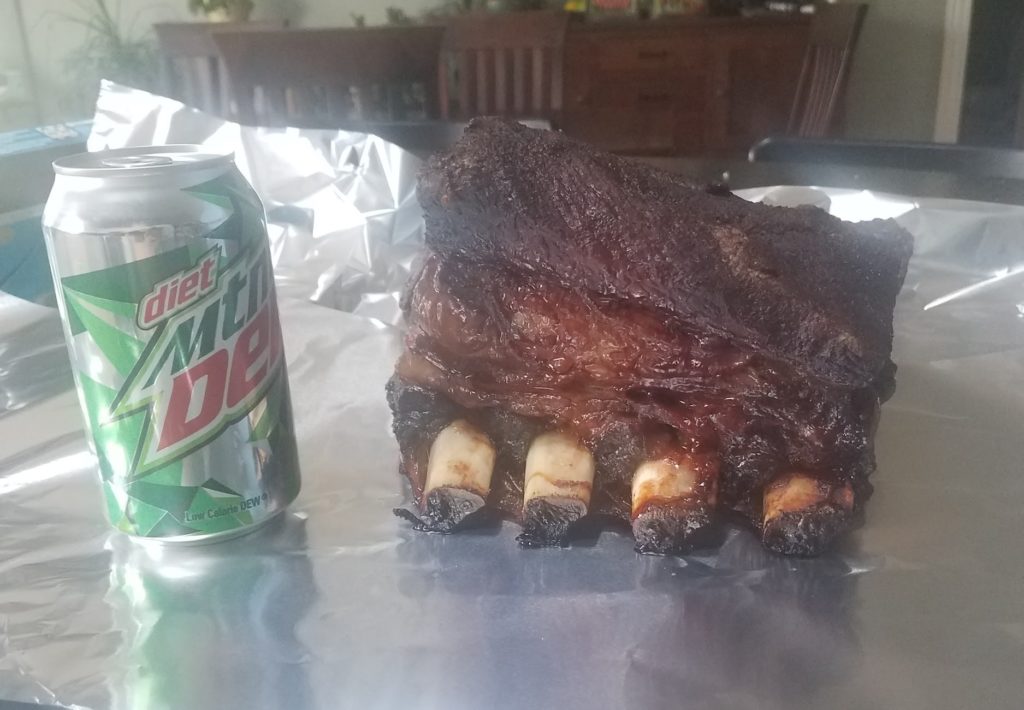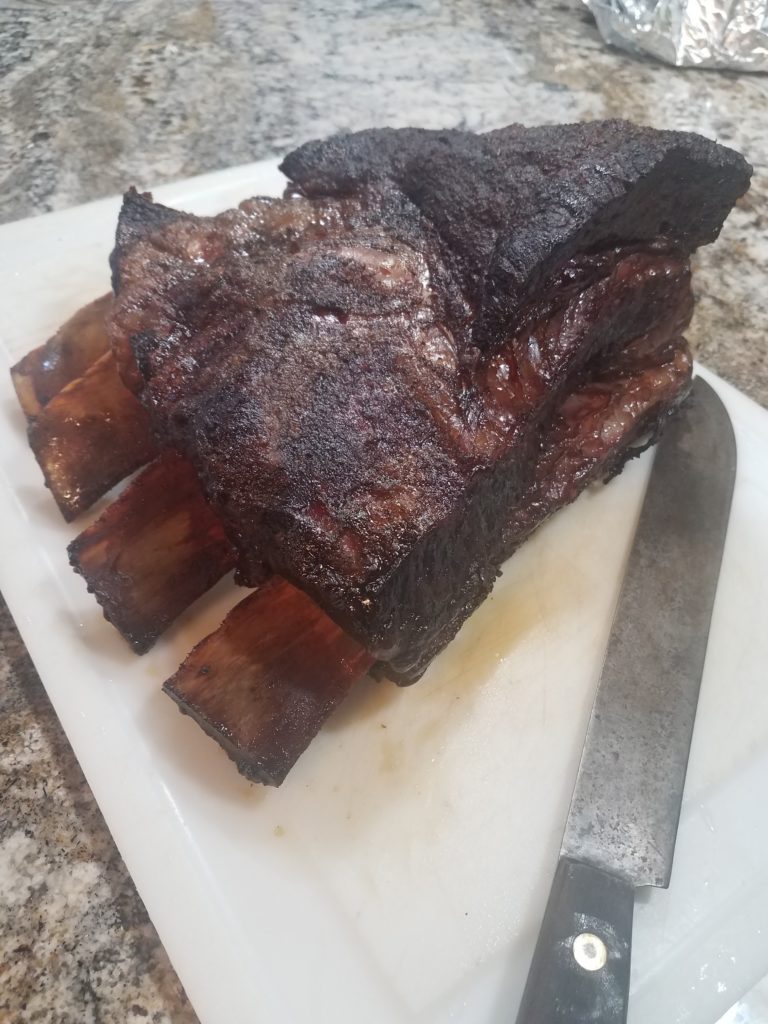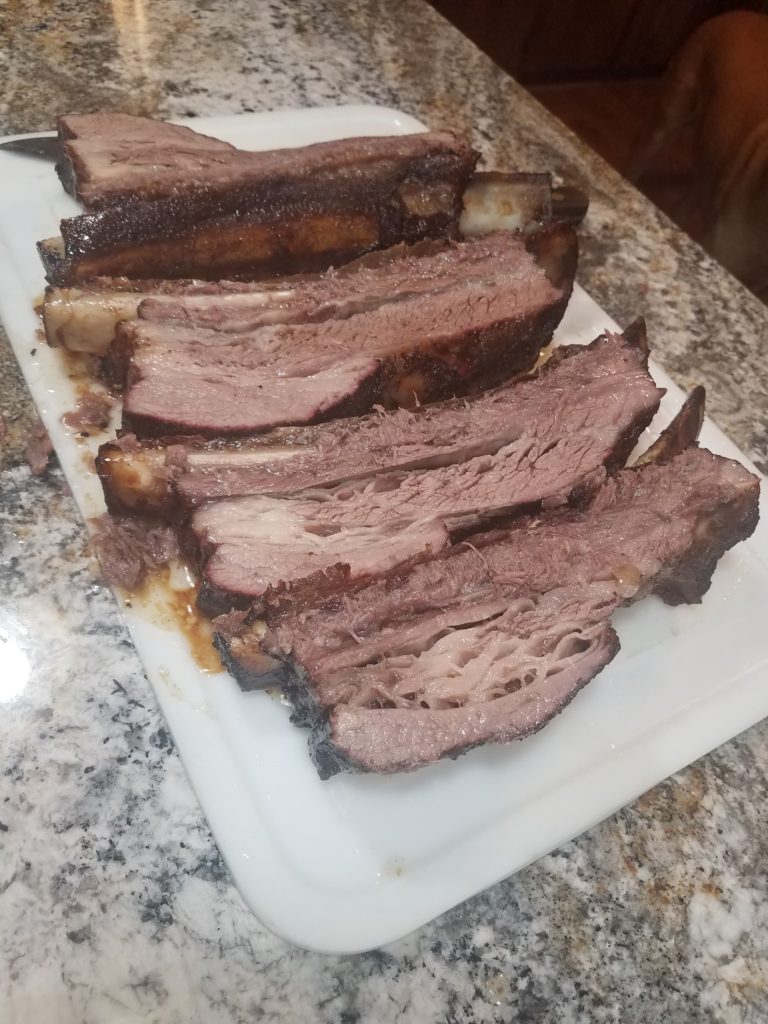“Dino” ribs have become a bit of a craze recently and we decided to get in on the fun and see what everyone was making a fuss over. They did not disappoint! Delicious and impressive!
This is the cut of meat to prepare when you want the flavors of smoked beef brisket and the WOW factor of huge bones with large portions of juicy meat hanging from them.
We started out by thawing out the ribs in the fridge. Think ahead because this will take a bit of time (1-2 days in the fridge). Then we removed them from the package and took a moment to take in exactly how large they were. Most of our packages have been cut into 5- 9lb. sections.
We knew they would be big but wow, dwarfing a normal sized can of pop. We first prepared our smoker for an indirect smoke at 300 degrees, and used hickory wood to smoke. Other woods such as mesquite would also be appropriate. The cooking time is variable and will be influenced by the smoker temperature, choose a temperature you are comfortable with and have the time to accommodate. This cut of meat needs to be cooked to “doneness” (time and temp can vary) You will know it is done when you get a meat probe “feel” that is described later.
While the smoker was coming up to and stabilizing at 300 degrees we trimmed any exposed fat down to ⅛ to ¼ of an inch or less. We were careful not to remove any meat from the ribs knowing most of the remaining fat would render off during the cooking process.
For our next step we seasoned the ribs with a basic beef seasoning that can be used with success on most beef dishes. Kosher Salt, pepper, garlic salt and seasoning salt. Season it fairly heavy as this is the only seasoning this thick piece of meat will get and be sure to cover all the sides.
The ribs were then placed bone side down on the grill grates. We monitored the grill temperature and the meat temperature in the thickest parts between the ribs by inserting an instant read meat thermometer once every hour or for large cuts of meat like this one we like to use a probe that can remain in the beef and be monitored remotely.
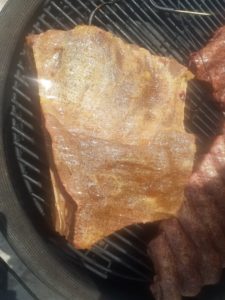
After 4.5 hours the ribs were reading around 200 degrees in temperature. At that time we placed an instant read meat thermometer probe in different parts making sure the temperature was consistent AND checking the meat for the “done” feel. The probe should meet some resistance on the outer crust of the meat but then slide through like a knife through room temperature butter, or close to it. That lets you know the meat is done and the connective tissues have broken down giving the most tender end result.
We then wrapped the beef ribs in some aluminum foil for a 45 minute rest. Even though you can tell the meat has shrunk down and now there are bones exposed, it is still quite large.
After resting in the aluminum foil we sliced them between the bones. They were juicy, glistening with moisture and each bone section fed around 2 people. We started with a 4 bone 9 lb beef ribs and we fed 8 (5 adults and 3 kids) people that night along with french fries, baked beans and coleslaw.
It was delicious!!!

